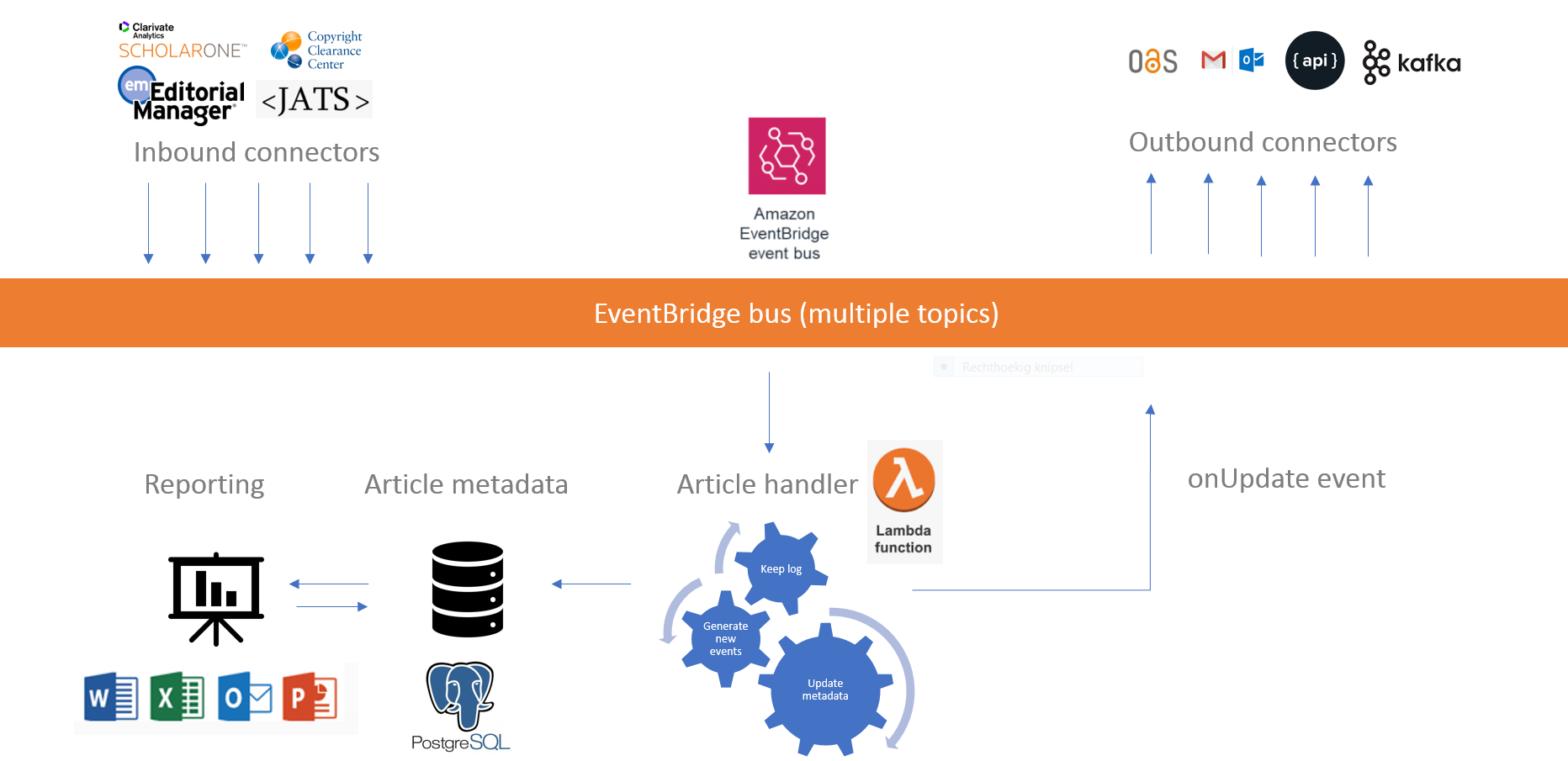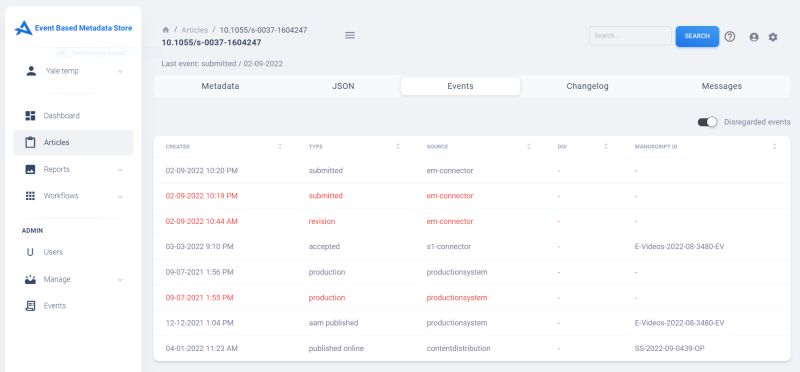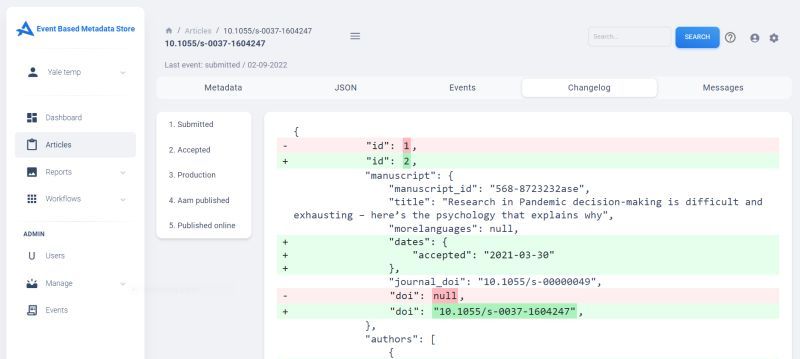
Publication Tracker Enterprise
The Publication Tracker Enterprise links publishing workflows to fulfill the need for systems interoperability and high-quality metadata. This tool is based on an event-driven architecture in which inbound connectors prompt events, or events trigger outbound connectors based on pre-defined business rules.
The tool not only embraces interoperability, but also centralizes metadata, allowing reporting across all systems and workflows.
-
When
2022 - 2024
-
Client Name
Thieme Verlag
Interoperability of systems
Both the Publication Tracker and the Publication Tracker Enterprise contain articles that are associated with multiple events. While both tools can be considered event-based, the Publication Tracker Enterprise stands out as an authentic event-driven architecture. Its architecture operates on events to enable communication between loosely connected services, systems, and workflows, with an event signaling a change in state or an update, such as the acceptance or publication of an article.
A publisher, such as Thieme, typically operates various systems designed to address specific aspects of the overall publishing workflow. The seamless interoperability of these systems is crucial. Interoperability refers to the capacity of decoupled computer systems or software to exchange and effectively utilize information. An event-driven architecture ensures this interoperability among systems. Our Publication Tracker Enterprise not only embraces interoperability, but also incorporates a central metadata store. The central repository streamlines reporting by consolidating metadata in one accessible location, simplifying processes, and enabling comprehensive reporting across the entire publishing infrastructure.
Taking the 'published' event as an example, communication must be established between decoupled services, systems, and workflows. In the context of the Publication Tracker, this generally involves dispatching a publication notification message via the OA Switchboard. However, you might also wish to inform authors via marketing emails, notify publishing staff, initiate content distribution, transmit data to analytical systems, and carry out other related actions.
A seemingly simple event—such as an article being published—could potentially trigger a cascade of interconnected services and workflows. To effectively manage this complexity, it is essential to consider adopting a genuinely event-driven architecture rather than solely relying on a metadata store. An event-driven approach allows for the orchestration of an array of services and workflows beyond basic communication, ensuring a more comprehensive and efficient system.
High quality metadata
Metadata is captured for every event and stored in a central place to accommodate reporting across all systems.
The data model of the Publication Tracker focuses mainly on requirements for the OA Switchboard (OAS). As a result, data is stored in the OAS-message model with its inherent benefits. A dedicated working group diligently oversees and upholds this message structure standard. The benefit of aligning with this evolving message standard is that the Publication Tracker seamlessly and automatically updates along with it, ensuring it remains up to date — a clear advantage.
However, standards are agreements among parties. In this case, discussions arise about specific fields and structures. For instance, in OAS messages, funders and grants are kept separate, while publishers might have nested data, such as linking a grant to a particular funder. Adhering to a standard means maintaining uniformity, which doesn't allow for accommodating such nested data in the Publication Tracker. Our Publication Tracker Enterprise provides a more flexible solution. Its data model can be adapted to meet the specific requirements of Thieme or any of our customers. This flexibility not only allows for customizations, but also inherently broadens the application's scope beyond connectivity with the OA Switchboard.
A unique feature of the Publication Tracker Enterprise is its customized data model, a feature that sets it apart from the Publication Tracker, which serves as a more simplified version of a metadata store.


